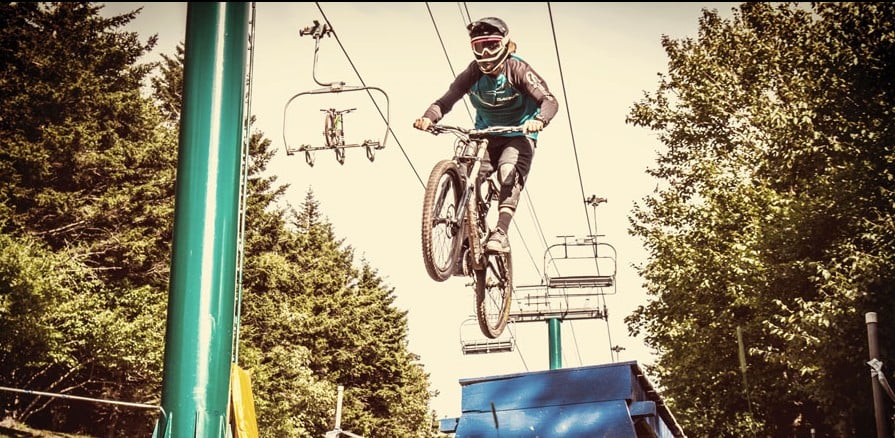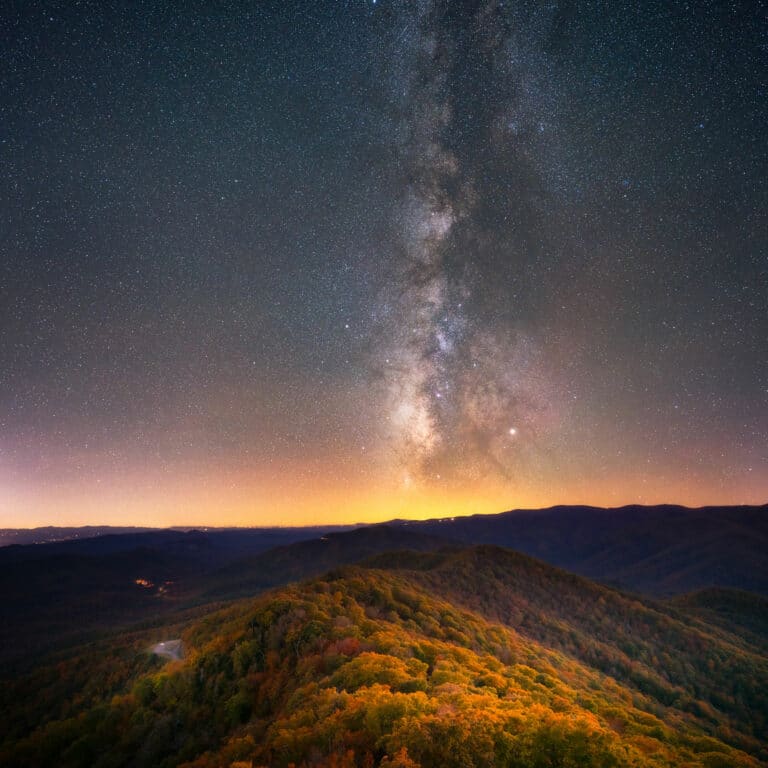Several resorts across Appalachia are making changes to prepare for warming weather patterns. If climate change is not slowed, ski resorts could see their livelihoods melt away completely in the not-too-distant future. But many resort owners say they are more worried about short-term, season-to-season temperature fluctuations than what their businesses could look like decades from now.
“We’re a very weather-dependent industry, and things have been up and down,” says Barbara Green, president of Blue Mountain Resort in Pennsylvania. “Last year, weekend visits were probably down about 20 percent. But because of the snowmaking technology we’ve invested in, I think we’re in a really good position to keep on skiing for many, many years.”
Tyler Crawford, director of front-end operations at Montage Mountain Ski Resort in Pennsylvania, feels much the same way. “Within the last 10 years, we’ve seen so much weather fluctuation. There’s no consistency.” Still, Montage Mountain is hedging its bets with a zip line, outdoor water park, and other warm-weather options in case the snow season shrinks significantly over time.
More and more resorts are coming up with creative ways to attract as wide a swath of humanity as possible—even those allergic to the cold. For example, Beech Mountain Resort in North Carolina offers a host of activities ranging from disc golf to scenic lift rides to a restaurant dubbed “the highest skybar in the East.” And Beech has become the epicenter of downhill mountain biking, attracting the national downhill biking championships to their trails.
“Downhill biking has become hugely popular, and people like that our trails are lift-accessible because you’re just riding down the hill,” says Talia Freeman, Beech Mountain’s director of marketing.
Other Eastern ski resorts are offering year-round recreation as well, including Snowshoe Mountain in West Virginia (backcountry tours, horseback riding, and yoga) and Wintergreen in Virginia (everything from archery to tennis to spa treatments). “We want people to visit us in summer as well as winter—to sort of rebrand ourselves,” says Shawn Cassell, public relations specialist for Snowshoe. Although climate change is also “a factor,” he says it isn’t driving business decisions, at least for now.
Then there are climate change skeptics like Chris Bates, general manager of Cataloochee Ski Area in North Carolina. “I don’t believe there’s enough science to say whether we’re in climate change or not,” he says. “Still, I believe in being a good steward of the environment. We should try to leave everything better than we found it.” For Cataloochee, that means common-sense measures like installing efficient lighting, recycling as much as possible, and investing in energy-efficient snowmaking equipment. But climate change itself gets no more than a shrug from Bates. “In the 30 years I’ve done this, I’ve seen up-and-down weather across the board,” he says. “I think I’ve seen it all, and it hasn’t varied that much.”
One thing is clear: a lot of money is at stake in the snowsports industry. A 2012 study by the Natural Resources Defense Council and the advocacy group Protect Our Winters, citing data from 2009-2010, found that more than 23 million people participated in winter sports through spending at ski resorts, hotels, restaurants, bars, grocery stores, and gas stations. All that activity pumped about $12.2 billion into the U.S. economy and supported, either directly or indirectly, nearly 212,000 jobs—including thousands in Eastern states like North Carolina (2,445) and Virginia (1,960).
Not surprisingly, the study also found that decreased snowfall blunts a lot of that economic impact. For example, between November 1999 and April 2010, Virginia and Maryland saw a combined 19 percent difference in skier visits for low snowfall years compared to years when snow was plentiful. That translated into a $17.9 million difference in ski resort revenue and a $13.6 million difference in added economic value.
Regardless of the financial bottom line, Geraldine Link, director of public policy for the National Ski Areas Association (NSAA), says her organization is working to fight climate change simply because it’s the right thing to do. The group adopted an official climate policy in 2002 with the goals of reducing the carbon footprint of ski resorts, educating others about carbon emissions, and advocating for climate-friendly legislation. She says 34 resorts nationwide (although only one in the East—Hunter Mountain in New York) have taken up the NSAA’s “climate challenge,” wherein they conduct carbon inventories of their ski areas and set emission-reduction targets that must be achieved with specific actions in a specific timeframe.
Despite everyone’s best efforts, climate change may already be an irreversible reality. For this and other reasons, it “makes sense as a business model” for ski resorts to offer warm-weather activities, Link says. “You have all of that infrastructure investment, so why not take advantage of it?” To that end, the NSAA successfully pushed for a 2011 bill that authorized the construction of facilities for four-season use of ski resorts operating on Forest Service land.
Resort owners are wise to expand their repertoires, because participation in winter sports is taking a hit. “For decades, the baby boomer generation has been the prime demographic for skiing,” says Larry Weindruch, president of National Ski & Snowboard Retailers Association. “That’s starting to change.” According to Weindruch, Generations X and Y aren’t necessarily replacing all of the Boomer skiing aficionados; many younger folks find snow sports inconvenient and expensive, want to start families, or just don’t have the time. The industry is trying to spread the skiing gospel through public relations campaigns, but it’s an uphill battle. “There’s leakage in terms of numbers of overall participants, and we need to do something about it,” he says. In other words, maybe ski resorts have more to worry about than just a warming planet.








